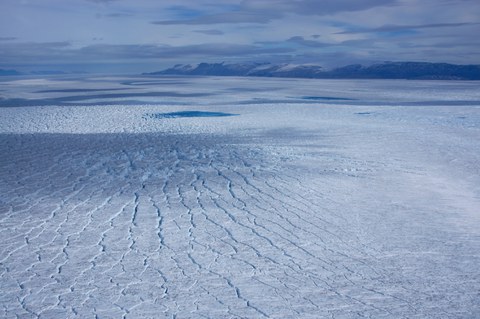Feb 05, 2021
Pressure relief lifts erd's crust: On ice-mass changes and earth deformation

view to the east of Nioghalvfjerdsbræ
Models of the glacial‐isostatic adjustment (GIA) to past ice‐mass changes exhibit large differences in north‐east Greenland owing to insufficient knowledge about glacial history and Earth rheology. The GIA uncertainties feed back to uncertainties in present‐day mass‐balance estimates from satellite gravimetry.
Geodetic Global Navigation Satellite System (GNSS) measurements allow to directly observe displacement of bedrock. The researcher-group around Maria Kappelsberger presents their results from repeated and continuous GNSS measurements conducted within five measurement campaigns between 2008 and 2017 in a new study published by Journal of Geophysical Research: Earth Surface (JGR).
They used the observed uplift rates to validate different GIA models in conjunction with estimates of the elastic response of the solid Earth to present‐day ice‐mass changes. To determine present‐day ice‐mass changes and the associated elastic deformations, the researchers combined various satellite data and included peripheral glaciers and ice caps. The different GIA models were consistently used in all processing steps.
